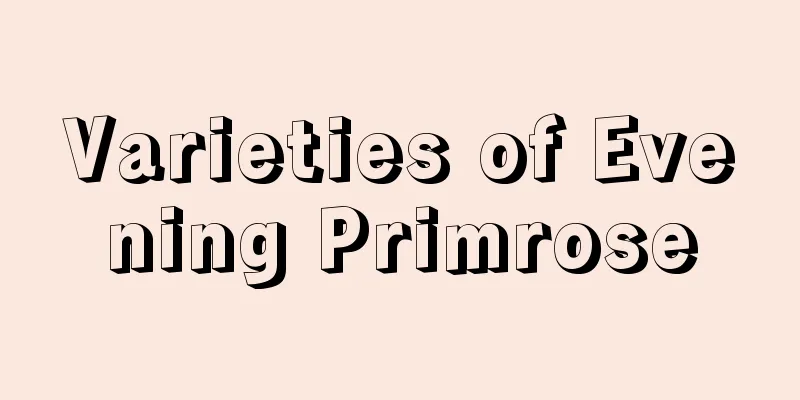Varieties of Evening Primrose

Evening PrimroseSeaside evening primrose, also known as sea hibiscus, is an annual to perennial herb with a taproot of about 1 cm in diameter and a stem length of 20-50 cm. The basal leaves are gray-green, narrowly oblanceolate to elliptic, with a sharp tip and a base that gradually narrows or suddenly narrows to the petiole. The buds are conical-lanceolate or narrowly ovate, and bend upward before opening. The sepals are green or yellow-green, with red edges when open. The flowers are yellow, and the flowering period is from May to August. It is native to the Atlantic coast and Gulf coast of the United States and is cultivated and allowed to grow wild in Peru, Chile, Australia, the United Kingdom, Spain, Israel, Iraq, Egypt, South Africa and other countries. Evening PrimroseThe main root of yellow evening primrose is very thick, the stem is about 70-150 cm high and 6-20 mm thick, often densely covered with soft hairs and sparsely extended long hairs (the base of the hairs is red and blister-like). The basal leaves are rosette-shaped, oblanceolate, with sharp or slightly obtuse tips, shallowly wavy serrations on the edges, white or red, dark green or bright green on the upper part, the flowers are yellow, the seeds are rhombus-shaped, brown, angular, with irregular pits on each surface, and about half of them are aborted. The flowering period is May to October. The yellow evening primrose species originated from a hybrid that was cultivated or wild in Europe and was spread from Britain to various countries for horticultural cultivation in 1860. Evening PrimroseErect to extrovert annual or perennial herb with a taproot. Stems 10-50 cm long, often branched, covered with curved soft hairs, sometimes mixed with long soft hairs, often mixed with glandular hairs in the upper part of the stem. It is native to the eastern to central United States, and was later introduced for cultivation in Europe, East Asia, Australia, and South Africa, where it quickly escaped into the wild. Pink evening primrosePerennial herb with a thick taproot, often tufted stems, about 30-50 cm, petioles lavender, filaments white to lavender, 5-7 mm long, anthers pink to yellow. It is native to southern Texas to Mexico, and is also found in the southwestern United States, Central America, and the warm temperate mid-mountain areas of South America. |
<<: How to grow green peony flowers
>>: What are the types of zinnias?
Recommend
Cultivation methods and precautions of variegated philadelphus
1. Maintenance methods 1. Soil: When planting in ...
How to plant Kalanchoe seeds
1. Seeds The first point that needs to be explain...
How to remedy the yellowing of the leaves of the fortune tree? Is there any way to save it if the roots rot and become soft due to overwatering?
1. What to do if the leaves turn yellow 1. Reason...
Which one is better to keep at home, Guanghan Palace or Wanxia?
Guanghan Palace belongs to the genus Echeveria of...
How to make and use banyan flower fertilizer
Banyan tree suitable for flower fertilizer If you...
Can the Albizia Julibrissin be grown and survive in summer?
The Albizia Julibrissin , also known as the night...
Diseases and Pests of White Phoenix and Their Control
White Phoenix Disease Rust Rust often appears on ...
Mint planting methods and precautions
Mint is a well-known plant that not only relieves...
The legend of the origin of Pinellia ternata
The legend of the origin of Pinellia ternata Rega...
Can carbendazim solution be used to water flowers directly? The two best ways to use it
Water the flowers directly with carbendazim solut...
How to grow red claws from the succulent bear's paw
Bear's Paw Growth Conditions The succulent Be...
How to plant pomegranate trees? Planting methods and management techniques
Pomegranate tree growth environment requirements ...
How to cultivate Panax notoginseng
Panax notoginseng growth conditions When caring f...
Where is the best place to place the lucky charm?
1. Living Room It has a very festive look, very g...
Is jujube a fruit or a vegetable?
Are red dates fruits or vegetables? Red dates are...









